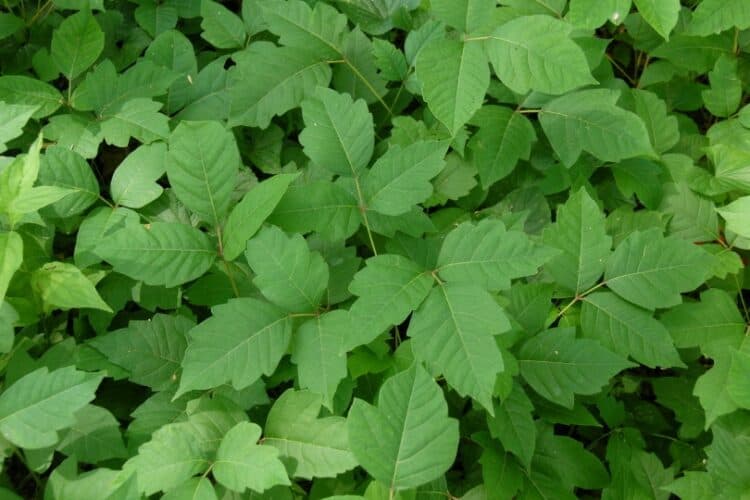Anyone who spends a lot of time outdoors is probably aware of the threat of poison ivy, the “leaves of three,” that can quickly ruin a fun day of hiking. If you’ve suffered through a battle with the itchy poison ivy rash, you know to give it a wide berth. But should you worry about your canine companion as well? Are dogs allergic to poison ivy?
Poison ivy can impact dogs just as it does humans, but it’s much less common because most pups are protected by their fur coats. In this article, we’ll let you know what symptoms you may notice if your dog comes into contact with poison ivy, including what happens if they eat some. We’ll also tell you what to do if you do suspect a poison ivy reaction, and how to keep you and your pup safe when enjoying the outdoors.
How Dogs Can Get Poison Ivy
A poison ivy rash occurs when oils in the plant make contact with our skin, causing an allergic reaction in most people. Generally, your dog’s fur coat will keep these oils away from their skin, making it much less likely to develop a reaction.
However, dogs could get a poison ivy rash in areas of the body with minimal hair, such as their belly, groin, or nose. Dog breeds with little hair like the Chinese Crested are also vulnerable to a poison ivy reaction.
Symptoms Of A Poison Ivy Reaction In Dogs
Like humans, dogs that develop a poison ivy reaction typically suffer from a red, itchy rash. It may take 3-7 days after your pup is exposed to poison ivy for symptoms to develop. If your dog suffers a severe reaction, you may spot fluid-filled blisters on their skin.
If your dog eats poison ivy, it may develop signs of stomach upset like vomiting and diarrhea. These could also happen if your dog licks poison ivy oils off their skin or ingest the fluid from burst blisters.
When you notice any of these symptoms and suspect a poison ivy reaction, you’ll likely need to see your veterinarian. They can properly diagnose your dog’s condition, rule out any other skin issues, and prescribe medications as needed.
Besides providing medications, you’ll need to keep your dog from scratching or licking their rash, especially if it has blistered. If they do, they may spread the poison ivy further or cause a secondary infection.

Keeping Your Dog Safe From Poison Ivy
Ideally, you should keep your canine away from poison ivy, just as you would yourself. Check your yard frequently and remove any plants you find. If you take your dog hiking, keep them on a leash and steer them away from sniffing or walking through suspected poison ivy.
If your dog spends time roaming unsupervised through woods or fields where poison ivy may be growing, wipe them off with a damp towel when they return as a precaution. If you know your dog has made contact with poison ivy, bathe them as soon as possible and monitor them for any symptoms.
Conclusion
Even if your dog doesn’t get a reaction from poison ivy, keep in mind that they could carry the oils on their fur and spread them to you. Indoor dogs are not as vulnerable to the plant as outdoor pups, but try to clean your dog’s coat after afternoon walks. With a few precautions, you and your dog can share outdoor adventures without suffering any itchy side effects.
Featured Image Credit: Shutterstock














